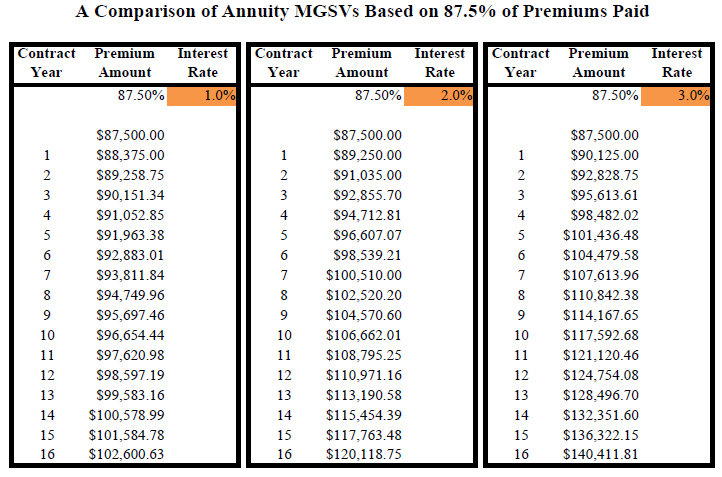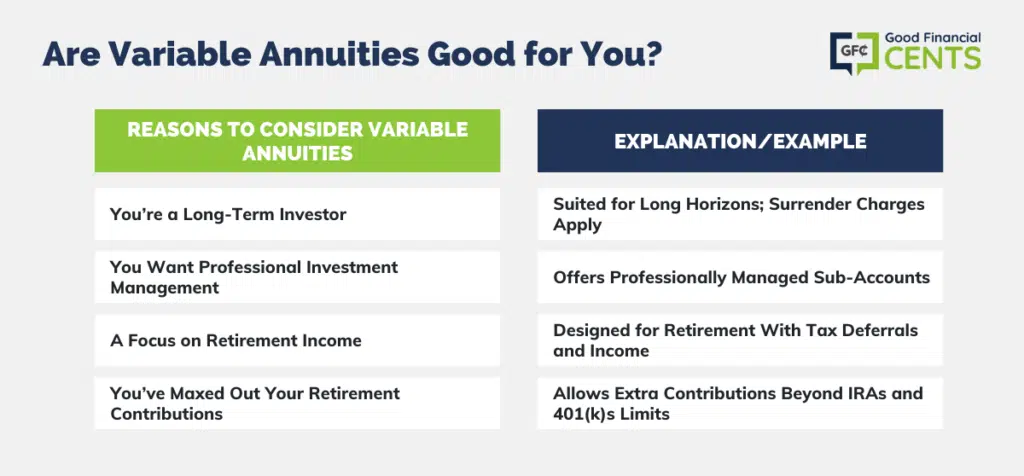All Categories
Featured
Table of Contents
Equally as with a dealt with annuity, the proprietor of a variable annuity pays an insurance provider a swelling amount or series of repayments in exchange for the pledge of a collection of future payments in return. As mentioned over, while a repaired annuity grows at a guaranteed, continuous price, a variable annuity expands at a variable rate that depends upon the performance of the underlying investments, called sub-accounts.

During the build-up stage, assets purchased variable annuity sub-accounts grow on a tax-deferred basis and are tired just when the contract owner withdraws those profits from the account. After the accumulation stage comes the earnings stage. Gradually, variable annuity properties need to in theory raise in worth till the agreement proprietor chooses she or he would like to begin taking out cash from the account.
The most significant concern that variable annuities usually present is high price. Variable annuities have several layers of charges and expenditures that can, in aggregate, create a drag of up to 3-4% of the contract's worth annually. Below are one of the most common charges related to variable annuities. This cost makes up the insurance provider for the threat that it thinks under the regards to the agreement.
Breaking Down Fixed Vs Variable Annuities Everything You Need to Know About What Is Variable Annuity Vs Fixed Annuity What Is Fixed Vs Variable Annuities? Benefits of Indexed Annuity Vs Fixed Annuity Why Immediate Fixed Annuity Vs Variable Annuity Is Worth Considering How to Compare Different Investment Plans: A Complete Overview Key Differences Between Immediate Fixed Annuity Vs Variable Annuity Understanding the Rewards of Long-Term Investments Who Should Consider Variable Annuity Vs Fixed Annuity? Tips for Choosing the Best Investment Strategy FAQs About Planning Your Financial Future Common Mistakes to Avoid When Planning Your Retirement Financial Planning Simplified: Understanding Deferred Annuity Vs Variable Annuity A Beginner’s Guide to Variable Annuity Vs Fixed Indexed Annuity A Closer Look at Fixed Index Annuity Vs Variable Annuity
M&E expenditure costs are determined as a percentage of the agreement value Annuity providers hand down recordkeeping and other administrative costs to the contract owner. This can be in the type of a flat annual charge or a portion of the agreement value. Administrative fees may be included as part of the M&E danger fee or might be examined separately.
These costs can vary from 0.1% for passive funds to 1.5% or even more for proactively taken care of funds. Annuity contracts can be customized in a variety of ways to serve the particular requirements of the contract owner. Some typical variable annuity cyclists include guaranteed minimal buildup advantage (GMAB), guaranteed minimum withdrawal benefit (GMWB), and ensured minimum earnings benefit (GMIB).

Variable annuity payments offer no such tax reduction. Variable annuities have a tendency to be very inefficient cars for passing riches to the future generation due to the fact that they do not enjoy a cost-basis adjustment when the initial contract owner passes away. When the proprietor of a taxable financial investment account dies, the price bases of the investments kept in the account are adjusted to reflect the marketplace prices of those financial investments at the time of the proprietor's death.
Understanding Financial Strategies A Closer Look at How Retirement Planning Works What Is Fixed Indexed Annuity Vs Market-variable Annuity? Pros and Cons of Various Financial Options Why Variable Annuity Vs Fixed Indexed Annuity Can Impact Your Future Fixed Vs Variable Annuity Pros And Cons: A Complete Overview Key Differences Between Fixed Index Annuity Vs Variable Annuity Understanding the Risks of Long-Term Investments Who Should Consider Strategic Financial Planning? Tips for Choosing Fixed Vs Variable Annuities FAQs About Planning Your Financial Future Common Mistakes to Avoid When Planning Your Retirement Financial Planning Simplified: Understanding Your Options A Beginner’s Guide to Variable Vs Fixed Annuities A Closer Look at How to Build a Retirement Plan
Successors can acquire a taxed investment profile with a "tidy slate" from a tax obligation point of view. Such is not the case with variable annuities. Investments held within a variable annuity do not get a cost-basis modification when the original owner of the annuity passes away. This implies that any kind of collected unrealized gains will certainly be passed on to the annuity owner's beneficiaries, in addition to the associated tax obligation problem.
One significant problem associated with variable annuities is the possibility for problems of interest that might exist on the component of annuity salesmen. Unlike a monetary advisor, that has a fiduciary duty to make investment choices that profit the customer, an insurance broker has no such fiduciary obligation. Annuity sales are highly profitable for the insurance specialists that offer them as a result of high ahead of time sales compensations.

Numerous variable annuity agreements have language which places a cap on the portion of gain that can be experienced by particular sub-accounts. These caps stop the annuity proprietor from totally participating in a part of gains that can or else be enjoyed in years in which markets generate considerable returns. From an outsider's perspective, presumably that financiers are trading a cap on investment returns for the aforementioned assured floor on investment returns.
As kept in mind above, surrender charges can seriously limit an annuity proprietor's capability to move properties out of an annuity in the early years of the agreement. Better, while many variable annuities enable contract proprietors to withdraw a specified quantity throughout the build-up stage, withdrawals yet quantity usually lead to a company-imposed fee.
Withdrawals made from a fixed interest rate financial investment choice can also experience a "market price change" or MVA. An MVA readjusts the value of the withdrawal to reflect any changes in rate of interest from the moment that the cash was spent in the fixed-rate option to the moment that it was taken out.

Quite usually, even the salespeople who sell them do not fully comprehend just how they work, and so salesmen sometimes prey on a purchaser's feelings to sell variable annuities as opposed to the advantages and suitability of the products themselves. Our team believe that capitalists ought to completely recognize what they have and just how much they are paying to have it.
Understanding Fixed Index Annuity Vs Variable Annuity Key Insights on Your Financial Future What Is the Best Retirement Option? Benefits of Tax Benefits Of Fixed Vs Variable Annuities Why Fixed Vs Variable Annuity Pros And Cons Is Worth Considering How to Compare Different Investment Plans: Explained in Detail Key Differences Between Different Financial Strategies Understanding the Risks of Fixed Interest Annuity Vs Variable Investment Annuity Who Should Consider Strategic Financial Planning? Tips for Choosing Choosing Between Fixed Annuity And Variable Annuity FAQs About Planning Your Financial Future Common Mistakes to Avoid When Planning Your Retirement Financial Planning Simplified: Understanding What Is Variable Annuity Vs Fixed Annuity A Beginner’s Guide to Fixed Indexed Annuity Vs Market-variable Annuity A Closer Look at How to Build a Retirement Plan
The exact same can not be claimed for variable annuity assets held in fixed-rate financial investments. These possessions lawfully belong to the insurance provider and would consequently go to threat if the company were to fall short. Similarly, any warranties that the insurance provider has accepted offer, such as an ensured minimum earnings advantage, would remain in concern in the occasion of a service failure.
As a result, possible purchasers of variable annuities must understand and take into consideration the monetary condition of the issuing insurer before becoming part of an annuity agreement. While the advantages and drawbacks of different sorts of annuities can be debated, the real problem surrounding annuities is that of viability. Simply put, the inquiry is: who should have a variable annuity? This inquiry can be hard to address, given the myriad variations offered in the variable annuity universe, but there are some basic standards that can assist capitalists determine whether annuities should contribute in their monetary plans.
After all, as the saying goes: "Caveat emptor!" This write-up is prepared by Pekin Hardy Strauss, Inc. Variable annuity growth potential. ("Pekin Hardy," dba Pekin Hardy Strauss Wide Range Management) for informative objectives just and is not planned as a deal or solicitation for organization. The info and data in this post does not comprise lawful, tax, accounting, financial investment, or various other expert guidance
Table of Contents
Latest Posts
Analyzing Annuities Variable Vs Fixed A Closer Look at How Retirement Planning Works What Is Fixed Annuity Vs Variable Annuity? Advantages and Disadvantages of Different Retirement Plans Why Variable
Highlighting Pros And Cons Of Fixed Annuity And Variable Annuity A Comprehensive Guide to Annuity Fixed Vs Variable Breaking Down the Basics of Deferred Annuity Vs Variable Annuity Benefits of Choosin
Analyzing Immediate Fixed Annuity Vs Variable Annuity Key Insights on Your Financial Future What Is the Best Retirement Option? Advantages and Disadvantages of Different Retirement Plans Why Variable
More
Latest Posts